Review: Arktis – Contact Jacket
Introduction
In 2024, Arktis teased the Contact Jacket during Enforce Tac – then called the Reaper. After a few tweaks in the design, the company released the jacket this year and I was really looking forward to taking a closer look at this model. After reaching out to Arktis, they agreed to provide me with a free review sample under the condition that I wouldn’t hold back and give an honest opinion – a no-brainer for me.
I have been using the Contact Jacket for a while now and got several impressions that I am ready to share with you guys, so let’s start with a short overview and the Contact Collection itself, before going into more detail on the jacket itself.
Overview
The Contact Field Jacket is part of Arktis’ Contact Collection. It is made from mechanical stretch NYCO ripstop with and features DWR and NIR treatments. The jacket consists of a large adjustable hood, ventilated pit zips, autolocking YKK zippers, and a regular ergonomic fit suited for wear with or without armour. It is not lined, but cut to allow for layering, making it usable throughout the year.
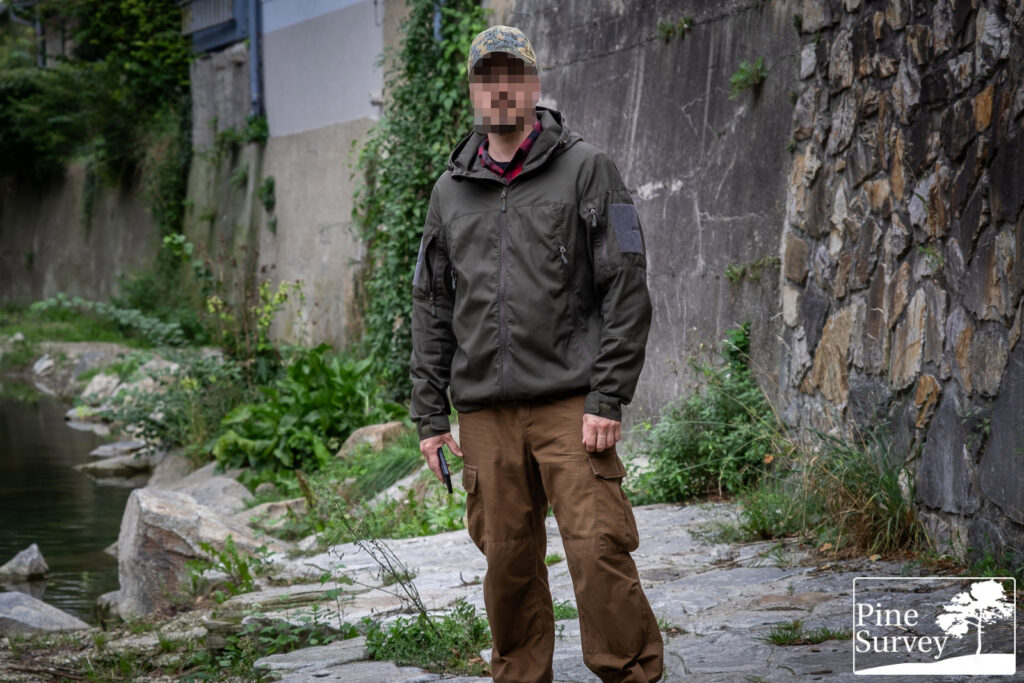
Specs:
Material:
- Mechanical Stretch NyCo (185g/m2)
- YKK Zippers
Production:
- Made in Pakistan
Available Colors:
- Multicam, Ranger Green, Black
The Contact Collection
The Contact Collection is part of Arktis’ Elite range, marking the company’s 40th anniversary with a focus on modernisation and professional field use. The product line includes the Contact Jacket, Combat Trousers, Cargo Trousers, and a UBACS shirt. Using modern materials, the garments use mechanical stretch NYCO ripstop and are treated with a DWR finish as well. They are also NIR compliant to meet modern demands of the tactical world – that being said, the military products of Arktis always featured NIR capabilities.
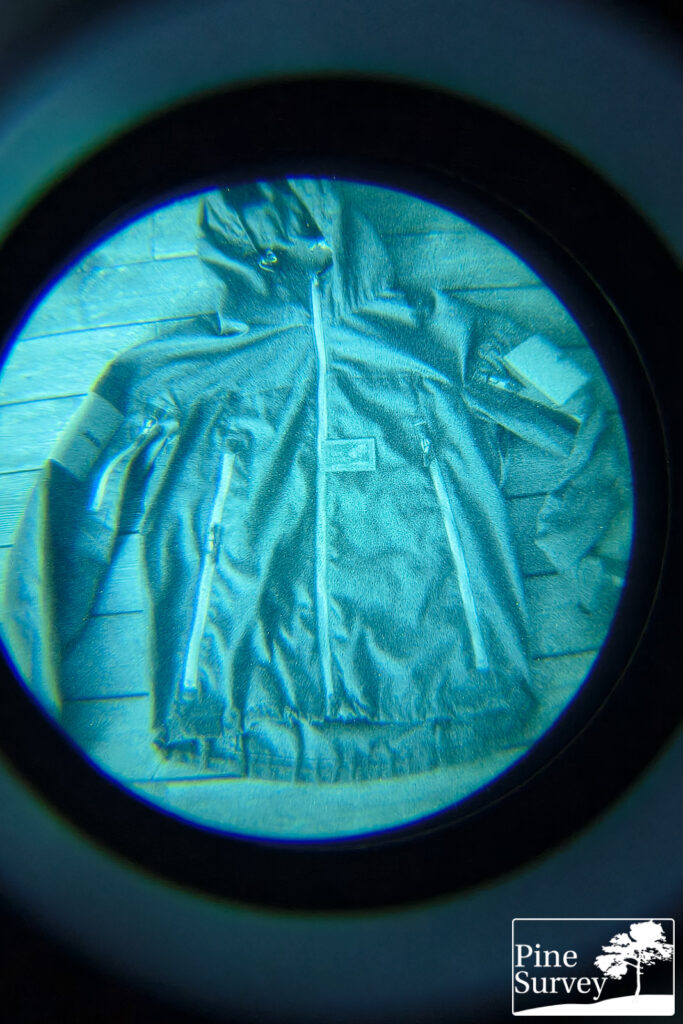
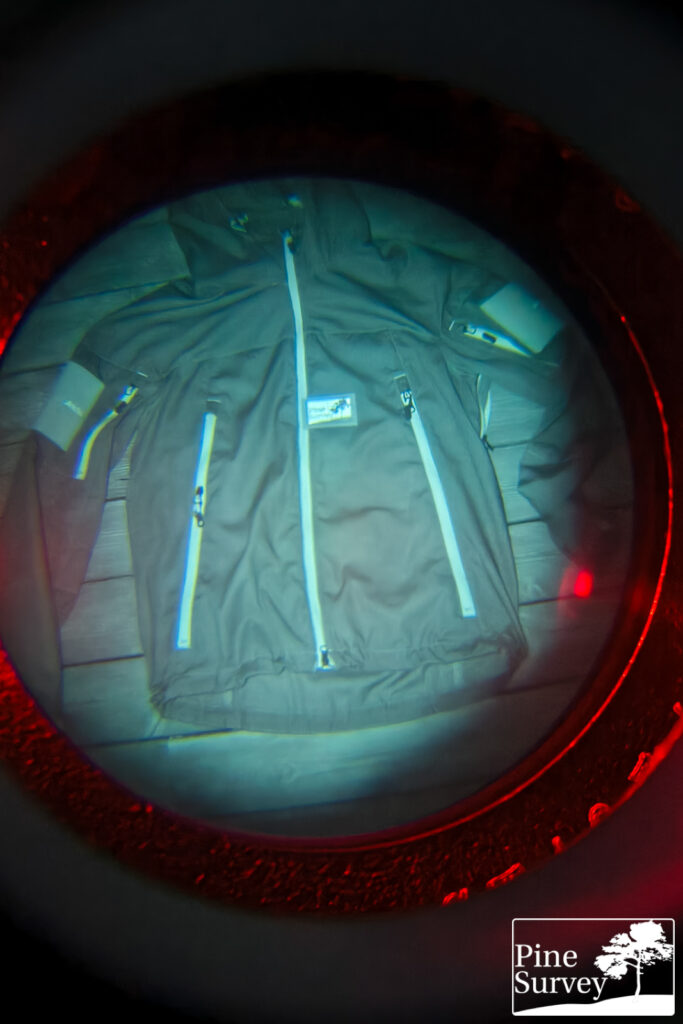
The collection is designed for a dedicated layered system and reflects Arktis’s ongoing effort to adapt their gear to modern operational demands in the military, law enforcement, as well as the outdoor community.
The Arktis Contact Jacket
Coming to the Contact Field Jacket. It is part of the above mentioned Contact Collection and follows the same design language as the Elite Stealth, and Vulcan Jackets. It is made of the above-mentioned mechanical stretch, NYCO ripstop fabric (made of CORDURA fibres) and is treated with a DWR finish for water resistance. It is lightweight yet robust, making it suitable for a variety of environments.
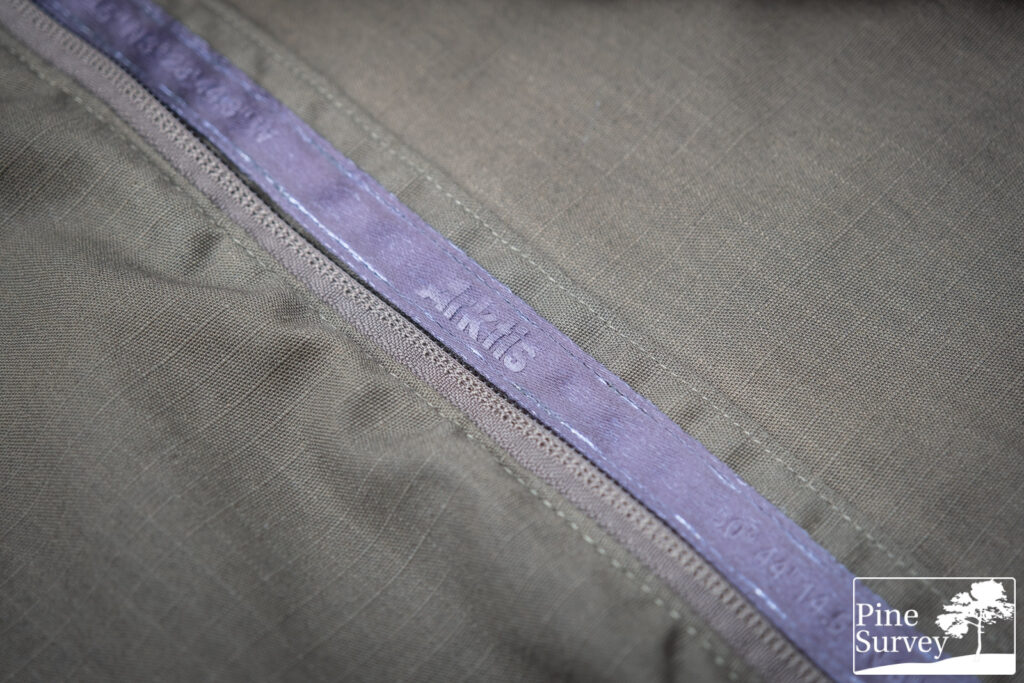
Starting at the top, the jacket features a large hood, which can be adjusted at three points. These adjustment points are discreetly integrated into the hood and collar, allowing the hood to be fitted tightly without restricting peripheral vision. At the front it has an integrated wire to adjust the opening for your face and keep the hood in shape.
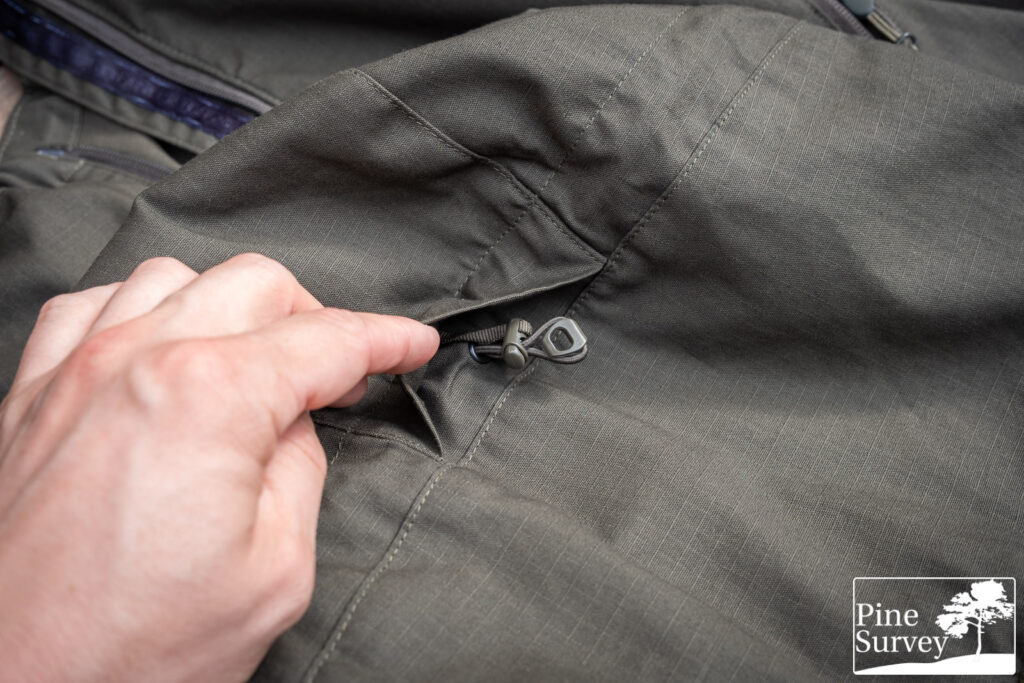

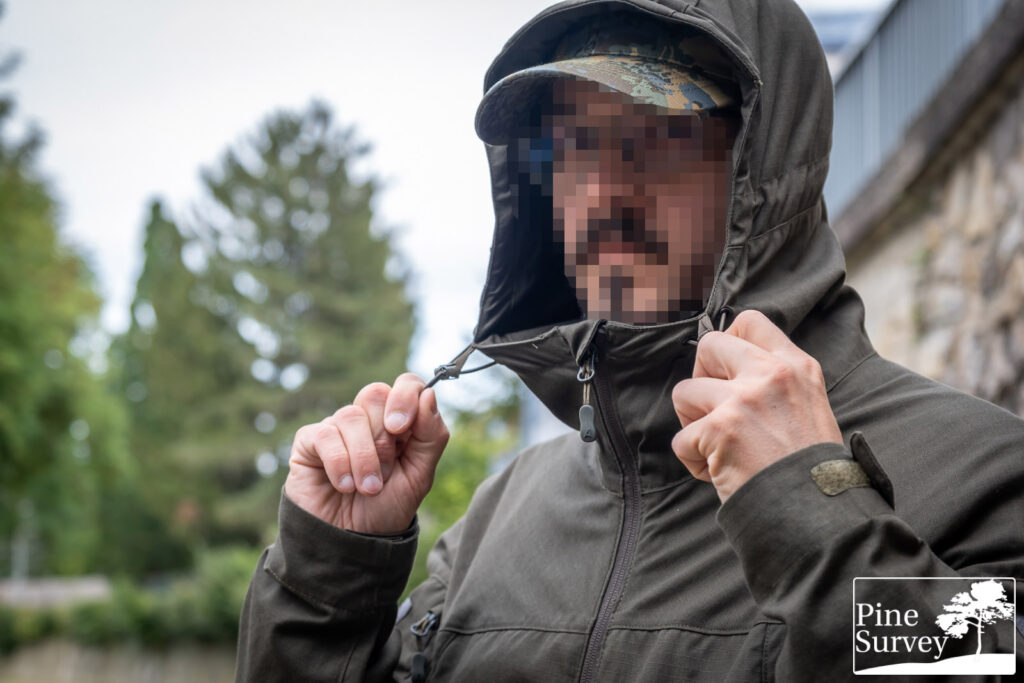
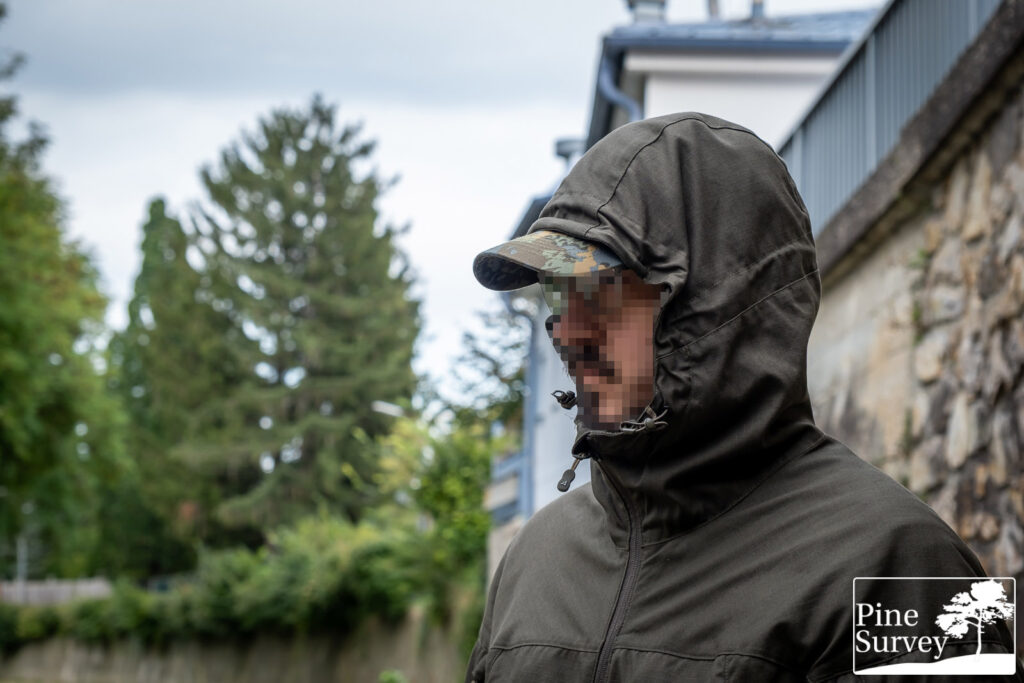
The Front Zipper is a two-way zipper by YKK and features a chin guard on top to protect your skin or beard from being caught in the zipper.
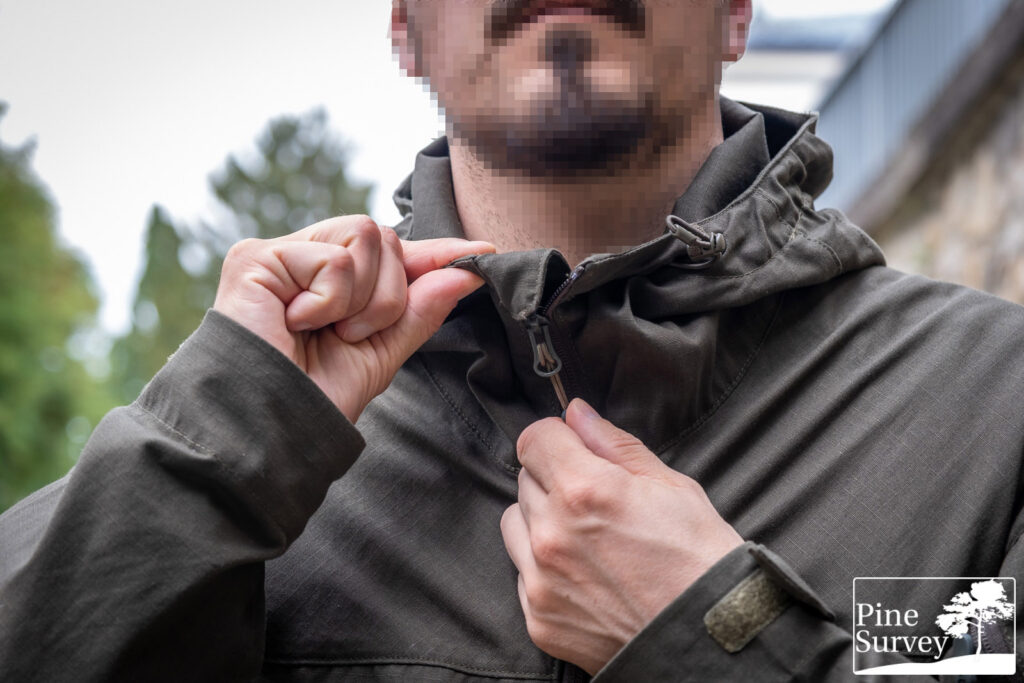
Moving down, the front of the jacket is equipped with two large chest pockets. These are accessible through dual YKK zippers, enabling access even when wearing body armour or chest rigs.
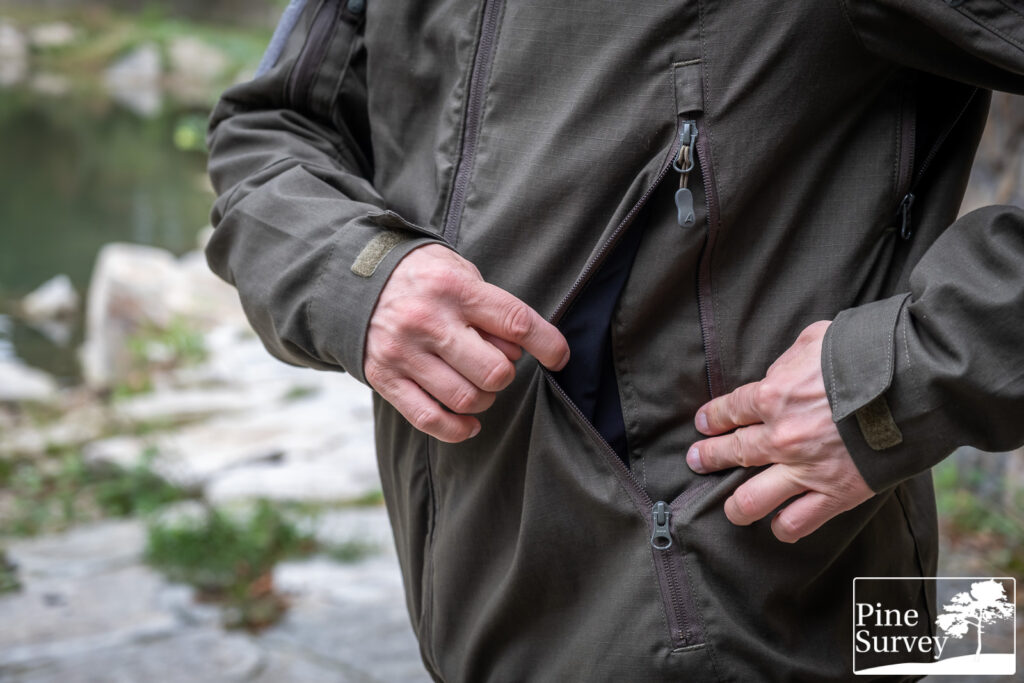

Inside the left chest pocket is an additional slip pocket for electronic devices, like your cell phone or a smaller GPS. Both front pockets, as well as the other compartments of the jacket, are lined with a stretch mesh material. This allows the pockets to double as ventilation openings when required.
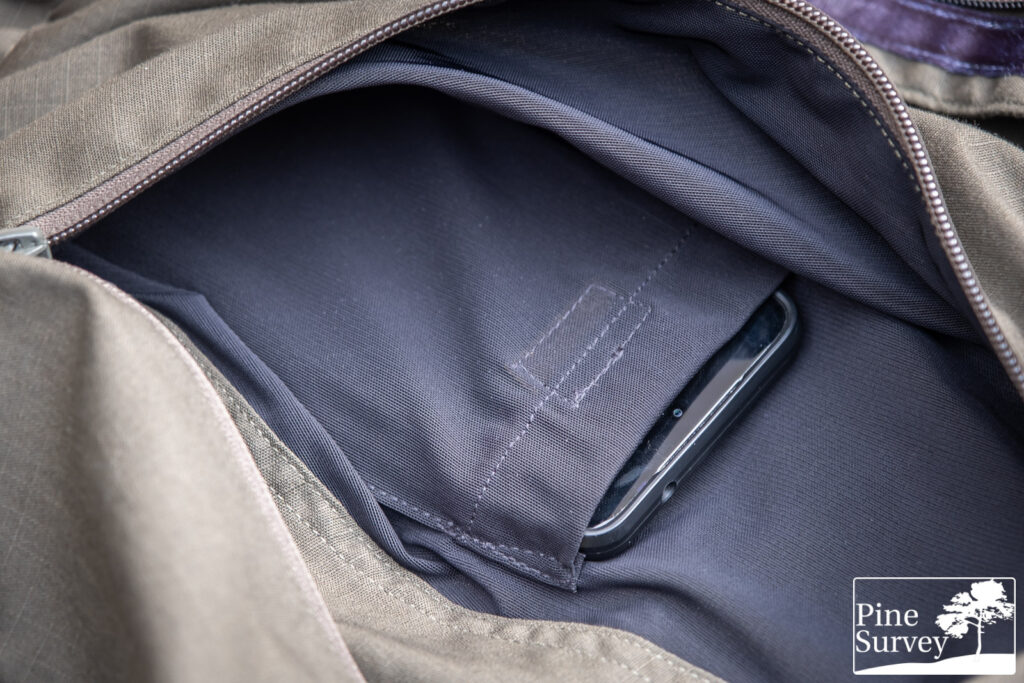

On each sleeve, the jacket provides zippered arm pockets. These come with loop panels on the outside for unit or ID patches. They are rather deep (they fit my whole hand) and feature no internal organization.
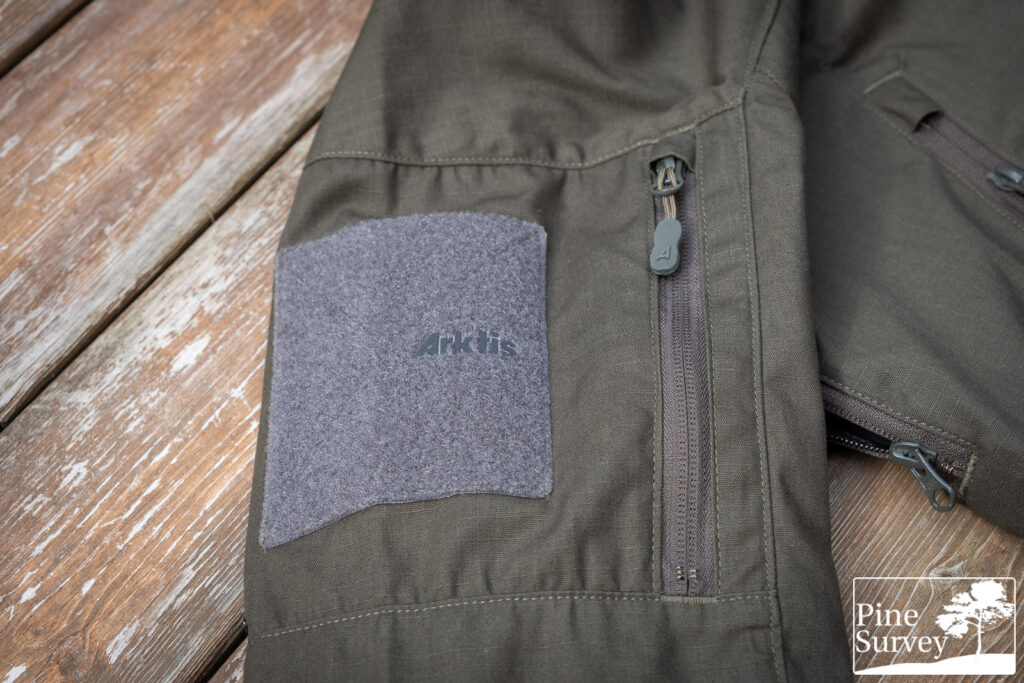
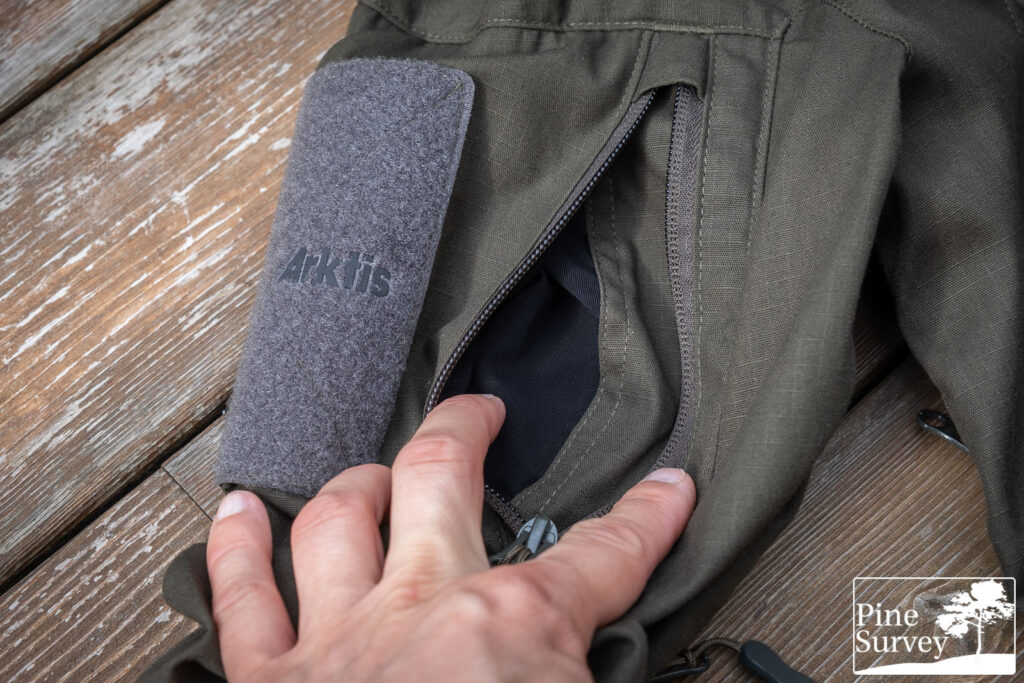
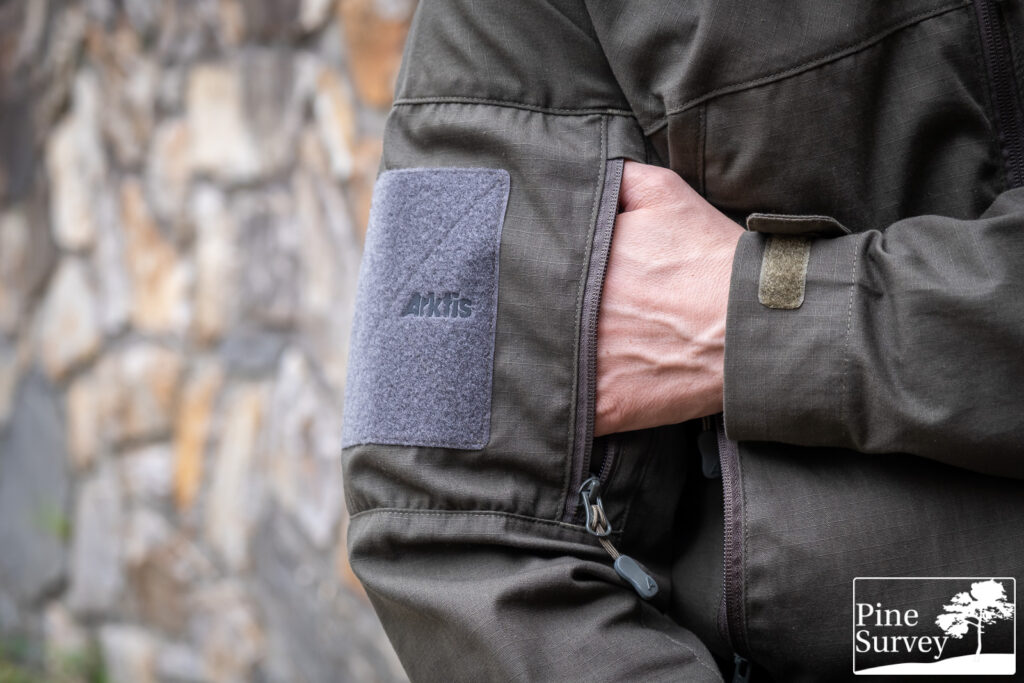
Below the arms, ventilation zips (aka pit-zips) further help with heat management, especially when the jacket is worn in combination with load-bearing equipment. These pit zips are covered with mesh, to prevent insects from entering or for the zips to open too wide. In combination with opened chest pockets, these pit zips create a comfortable air flow.
The sleeve cuffs can be adjusted via Velcro closures, allowing for a secure and comfortable fit. At the bottom hem, adjustment points are positioned on both sides. These are routed internally through a handy loop, ensuring that excess cord remains concealed and does not interfere with movement or equipment.
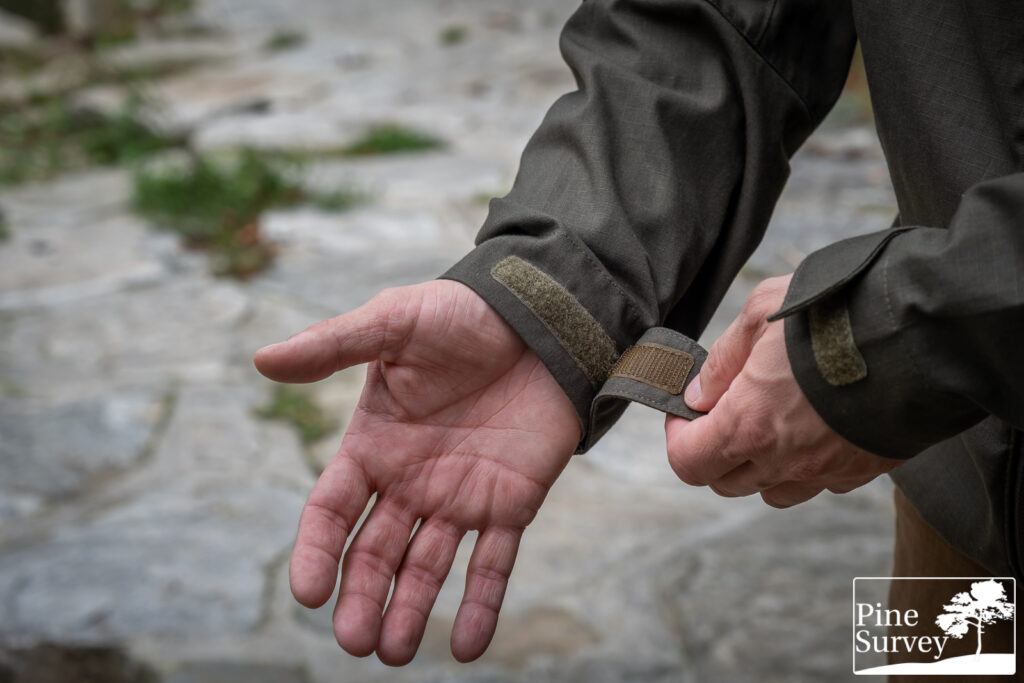
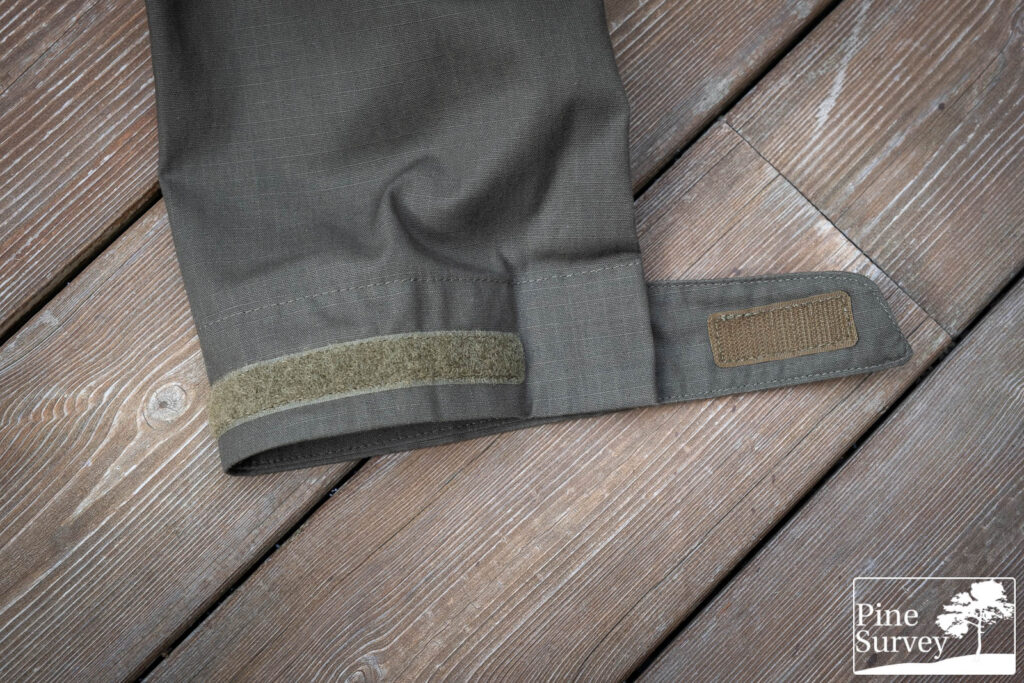

Size and Fit
Returning readers of the blog will remember that I sometimes struggle with jackets, since I am in between size Medium and Large. Being 1,80m tall, and weighing around 80kg, my physique, shoulders and long arms always make it difficult to find the right fit sometimes.
With that in mind, there are two things worth pointing out regarding Arktis.
- Their garments are true to size (Arktis . even states that clearly).
- You can trust the size chart on the official homepage of Arktis.
The chart is spot on and leaves no room for error if you understand the highest number as the relevant threshold (e.g. size Medium chest: 97 – 107cm, or size Large chest: 107 – 117cm). The highest number is close to the actual measurement of the garment, so if you are above that number ( for example 108cm) take the next size.
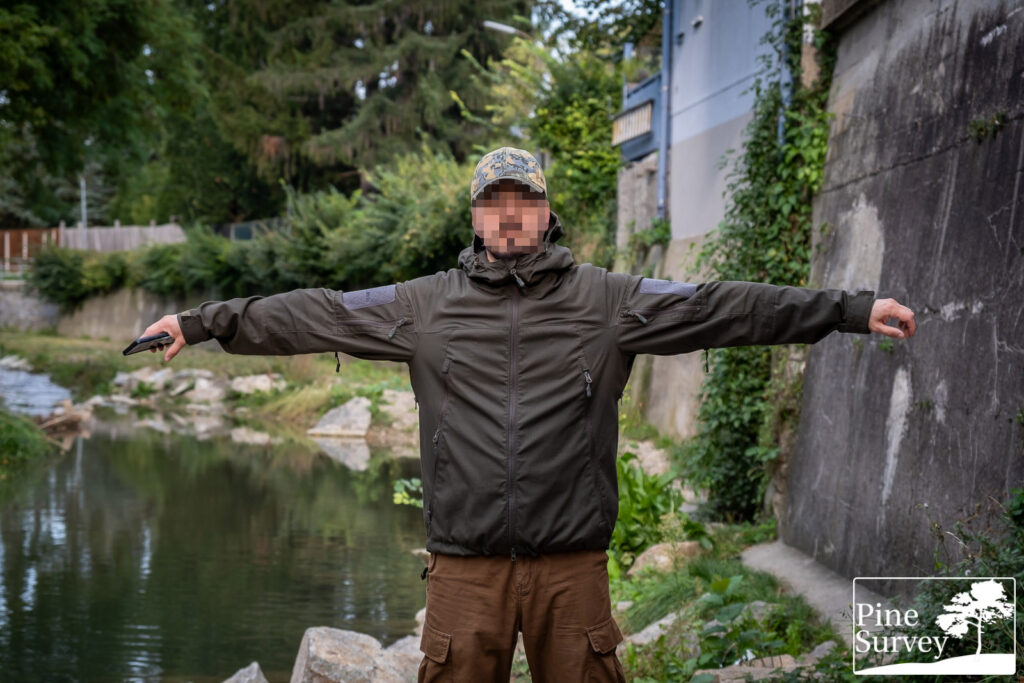
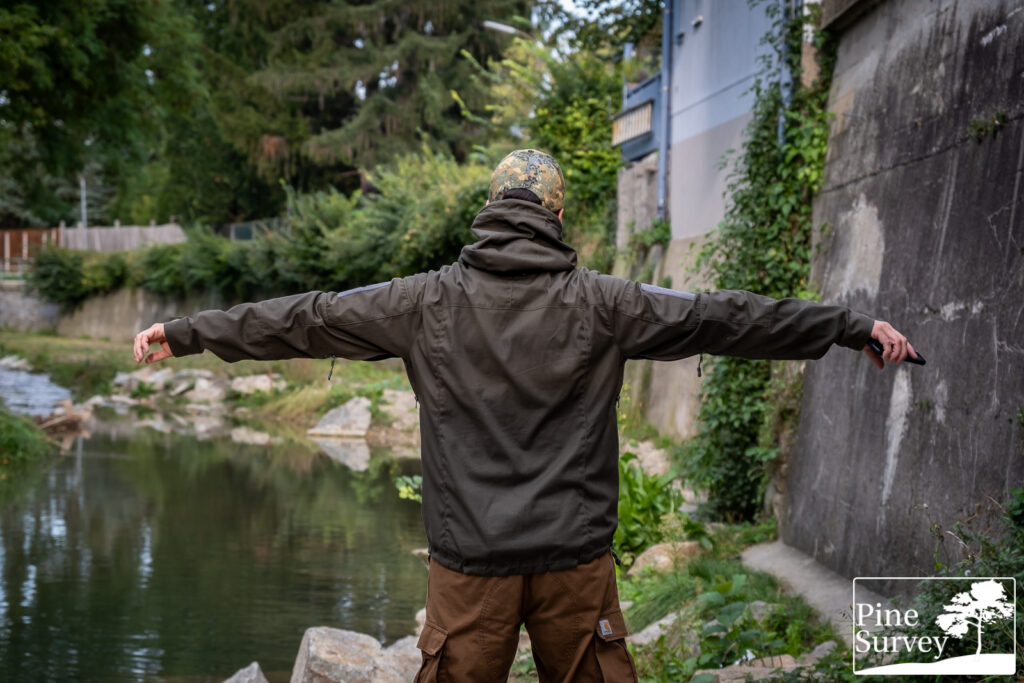
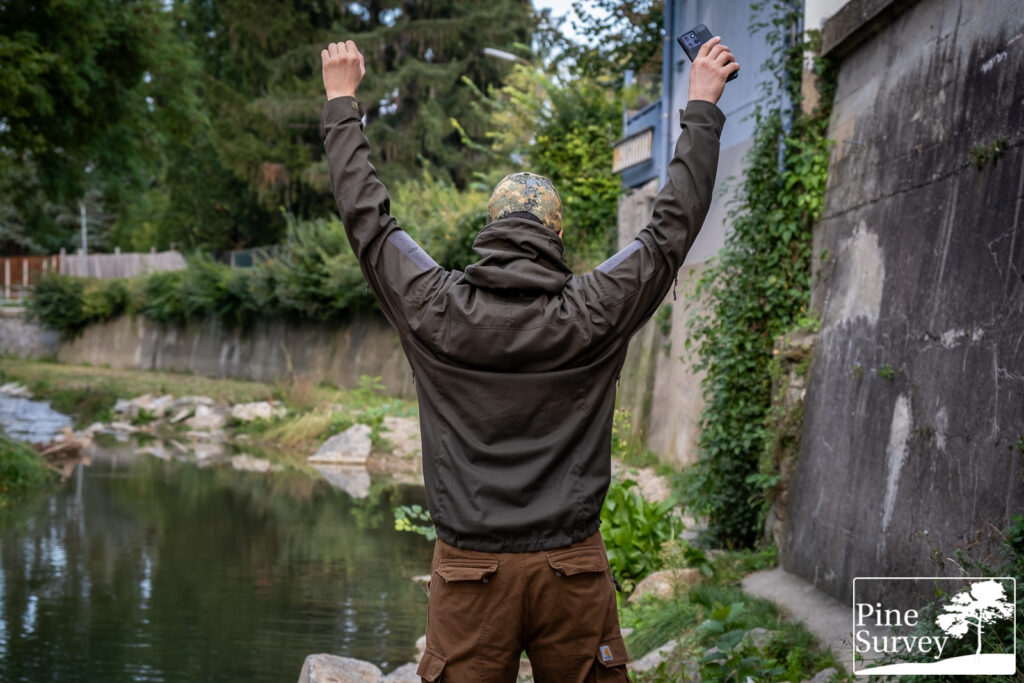
I went with size Large this time, to have a baggier fit as I gained a bit of weight and reached above mentioned threshold and needed to go a size up.
The fit is very comfortable and roomy with plenty of space to layer with a thick pullover or fleece. Looking at the length of the sleeves one can say that these are a bit longer than those of other jackets, which suits me well, as I have long arms. There is no restriction in movement and there is nothing left to say other than the jacket simply fits well.
Level of Manufacture
Arktis is known for using quality materials to deliver excellent, high-quality products. The Contact Jacket is no exception, and its quality is immediately apparent. The tight stitching, lack of loose threads and clean design all come together to make a convincing impression.
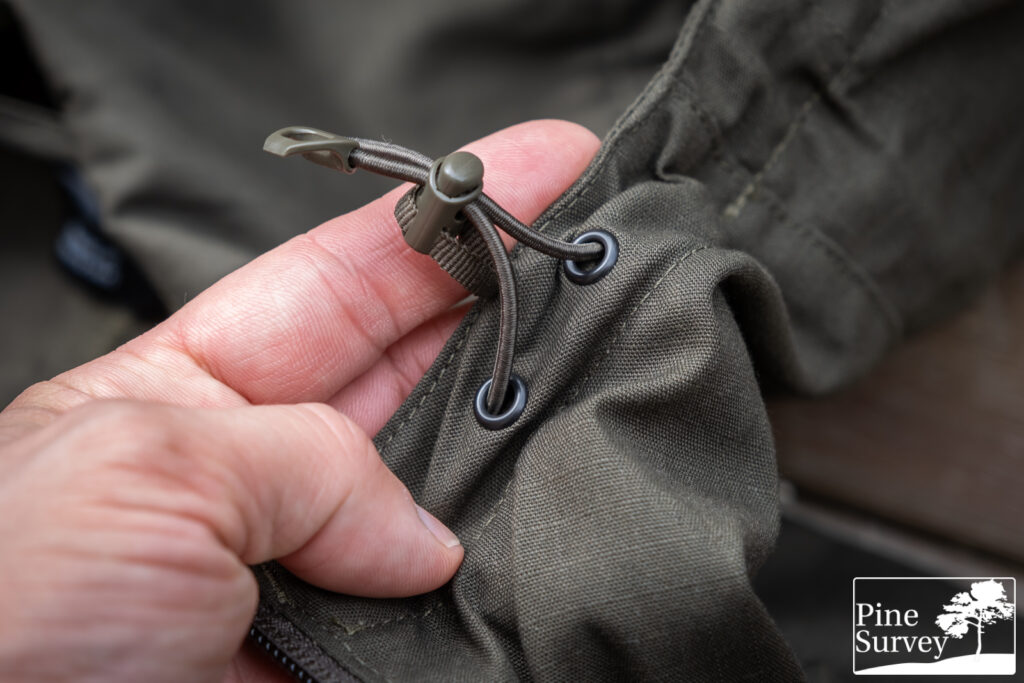
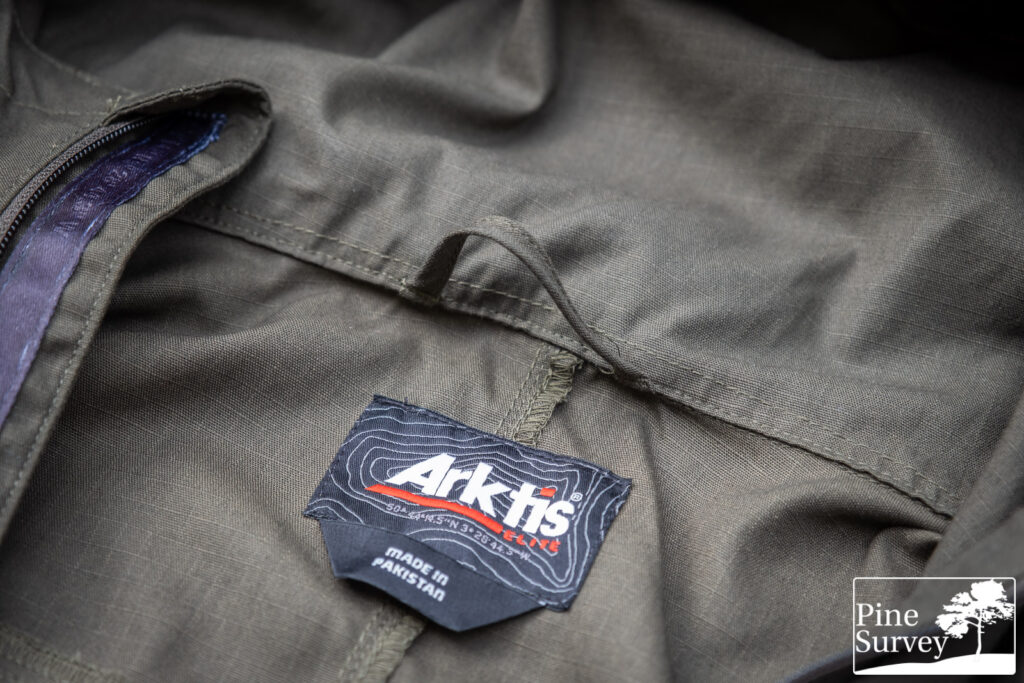
In Use
The Contact Jacket is a well thought through garment and in the time that I have been using it, I learned to appreciate it in several ways. For one, the NyCo material provides simply better breathability as a technical jacket, because of the material and the different thickness. It is also less noisy and wicks moisture in a different way so especially for drier environments that also cool down, this is a very practical jacket.

The zippers on the chest pockets confused me at first but I didn’t realize why, until I figured out that there are two instead of the usual, single zipper glide. So I simply had to relocate the pull cord to the lower zipper guide. As the zipper garage is on top of the zipper (as with any other jacket) the zipper glide you use the most is obviously the lower one.
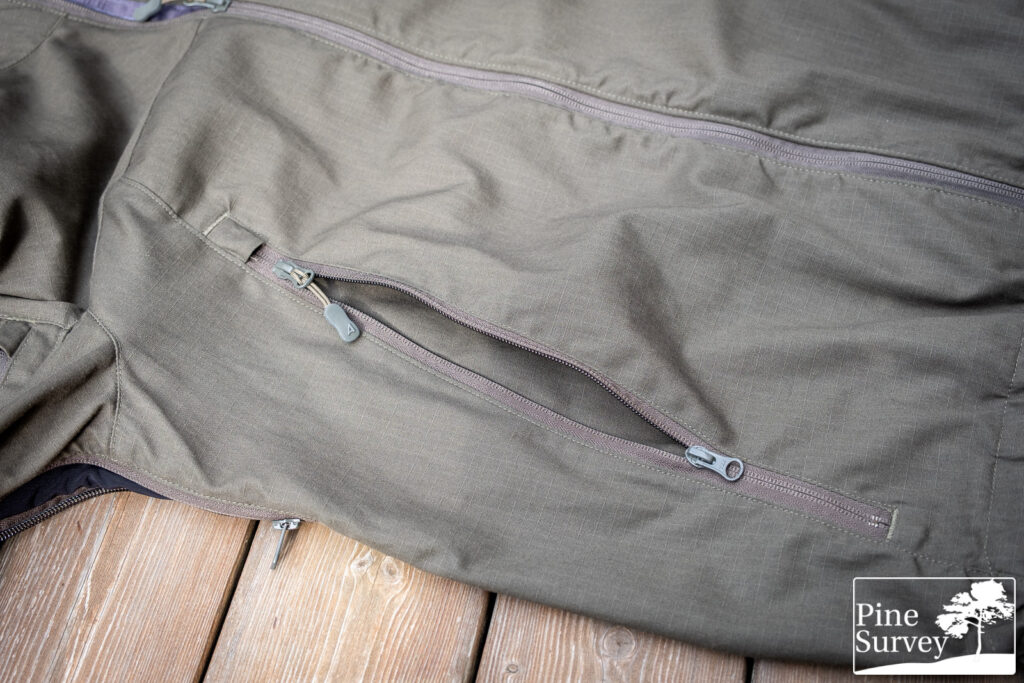
Speaking of zippers – the front zipper itself could be slightly larger. While it performs reliably, it can be a bit difficult to manipulate when wearing gloves – something worth noting if you are used to heavier-duty zippers on smocks or similar garments. It also has a two-way zipper – so if you need to get to your pockets, your belt, or if you want to cool down a bit, you can simply open it from the bottom up. Interestingly enough, Arktis decided to attach it inside out – it makes sense to turn the back of the zipper outwards so that it collects less dirt and is slightly tighter. One result though is that the zipper glides are on the right side and not left.

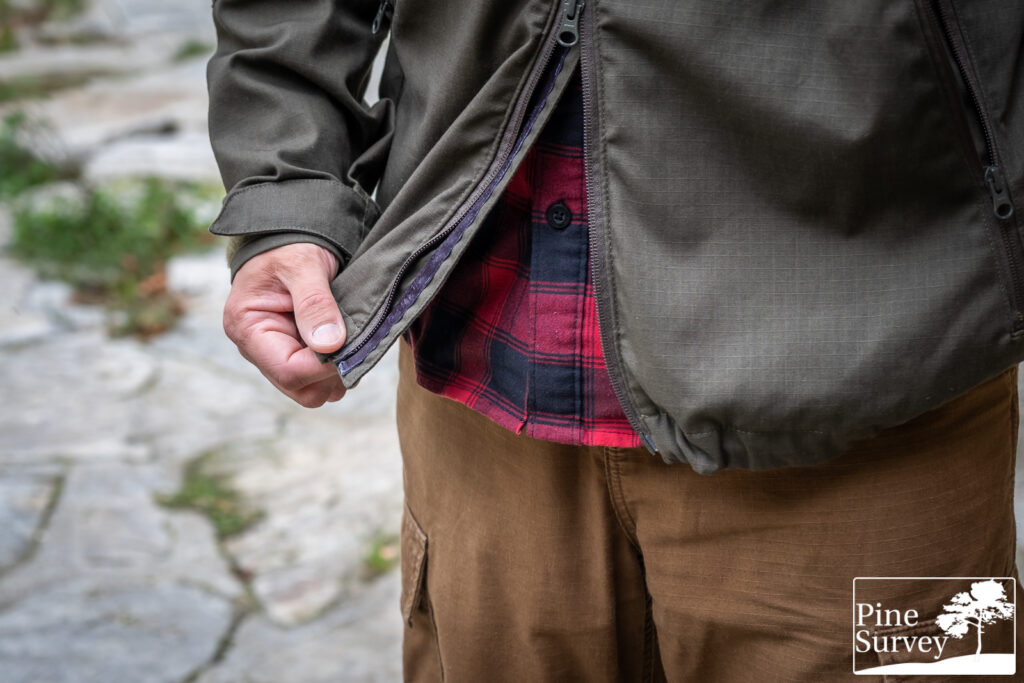
I’ve seen online that some users complain that the hood does not have a dedicated retention system. Some might find this inconvenient, especially if they prefer to roll or stow away their hoods. Personally, I do not see this as an issue, since I tend to leave hoods out in general. The shaping is done by a single wire integrated along the front edge at the top. While shorter in comparison to the wires of smock hoods, it is sufficient to adjust the hood around a cap with a visor, which is often all that is needed in the field.
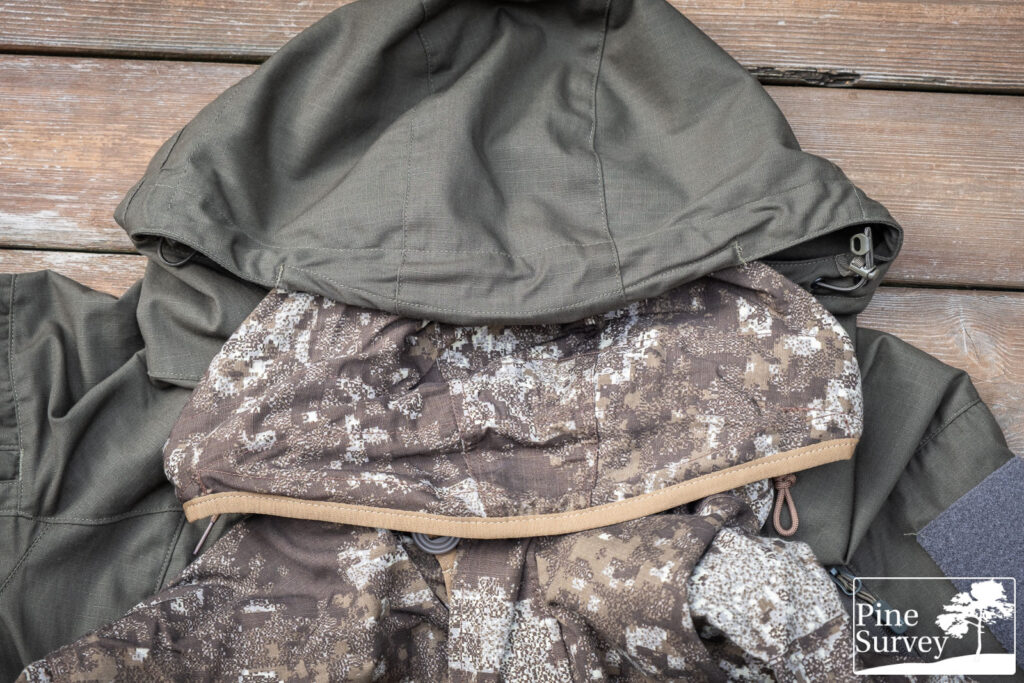

As for the fit, the jacket is comfortable to wear and allows unrestricted movement, which is not always a given with field jackets. Of course, this will depend somewhat on body type, but overall the ergonomics are well thought out. One point to consider: when worn with plate carriers or body armour, it is advisable to size up.
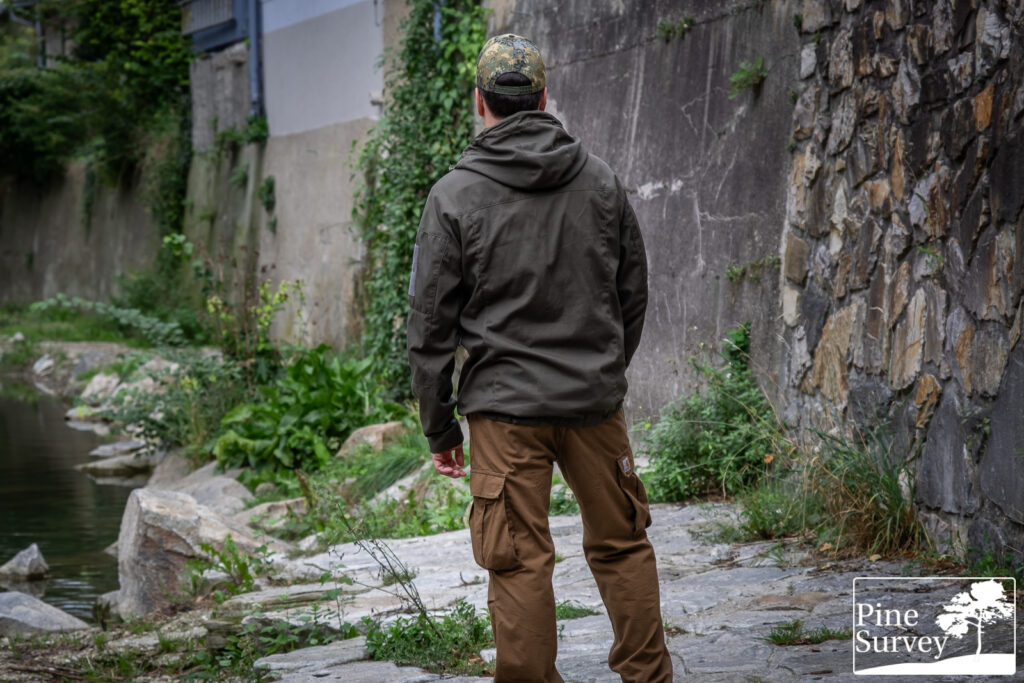
The choice of fabric results in a light shell that provides a bit more warmth when needed. Breathability is excellent and because of the NyCo, the jacket is also drying much faster when wet. Adding to that the material gives the user a slightly better protection against fire than a technical fabric that might melt.
Conclusion
Altogether, the Contact Field Jacket combines the durability and environmental protection of a smock with the cut and ergonomics of a modern jacket. Its material composition, thoughtful ventilation options, and careful integration of adjustment points make it a versatile choice for professional use in the field.
On the one hand it certainly is no alternative for any technical jacket when it comes to rain protection, but it will perform better in drier environments on the other hand. There are plenty of times when one simply needs another layer for protection, but not necessarily something against rain. So especially users in drier environments will appreciate the Contact Jacket.
Coming to an end it is also safe to say that the Contact Jacket is a very casual outer layer that simply looks good. Personally I have been looking for a NyCo shell like this since TAD Gear discontinued their Battle Hoodie. The Contact is a great addition to the Arktis line up and I hope to see the jacket in many more colors and camouflage patterns.
With that being said, I want to thank Arktis. for the opportunity to write about this jacket.
Many thanks for reading!
Take care!


No Comment
You can post first response comment.